4 Movements to Help with Carpal Tunnel Syndrome
 Carpal Tunnel Syndrome is caused by inflammation of or pressure on the median nerve. The
Carpal Tunnel Syndrome is caused by inflammation of or pressure on the median nerve. The
carpal tunnel is a narrow passageway in the wrist that is surrounded by bones and ligaments on the palm side of the hand. Carpal tunnel syndrome usually comes on slowly and gradually gets worse over time. As inflammation increases and pressure starts getting put on the median nerve, most people start to develop tingling or numbness in the hand. Every so often, individuals with more severe carpal tunnel syndrome may develop weakness in the hand and find it difficult or painful to grasp and hold objects. So, what can you do if you start to develop CTS to help prevent it from getting worse or to remedy it altogether?
There are many different types of treatment, ranging from the basic ice and non-steroidal anti-inflammatory drugs to stretching, to even surgery if absolutely needed. Icing and NSAIDs can be used to bring down inflammation. Even using a wrist splint while sleeping to keep the wrist from being put in strenuous positions has been proven to help. From here,
I recommend 4 types of movements to stretch the wrist and do some neural gliding to help relieve the symptoms.
Multi-Planar Rocking for Wrist Extension
- Start on your hands and knees, rotate one hand until the fingers are pointing back towards your thighs.
- Then slowly shift your weight back in your hips to create added flexion at the wrist and forward to remove the tension 10 times.
- Then shift your weight side to side 10 times.
- Finally, draw small circles 5 times in each direction with your shoulders and hips.

Wrist Shake
- Keeping your hands loose and palms facing your stomach, shake the hands up and down like you are shaking excess water off them.
- Do this for 10-15 seconds, relax and then repeat.
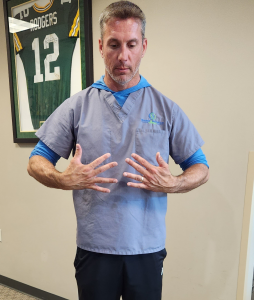
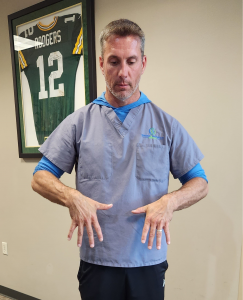
Wrist Flexion (Extensor Stretch)
- Make a fist, wrapping your fingers over your thumb.
- Hold that arm up about shoulder height, making sure to keep the arm straight at the elbow.
- Take your other hand underneath and grab the knuckles from over the top.
- Gently pull the knuckles down towards the floor.
- Once at the end range of motion, holding the wrist in flexion, push the top of the hand into the other hand without letting the wrist extend.
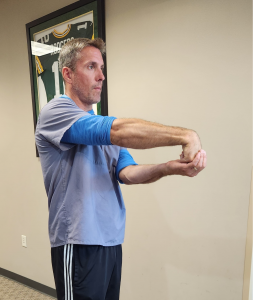
Median Nerve Glides
- Make a fist with one hand and keep the thumb on the outside.
- Uncurl the fingers, stretching the fingers and thumb out, making sure to keep the thumb pressed into the side of the hand
- Rotate the hand so that the palm is face up.
- Gently bend the wrist back towards the forearm and extend the thumb out to the side.
- With the opposite hand, apply gentle pressure down on the thumb to stretch it.
- For each change of position, hold for 3-7 seconds.


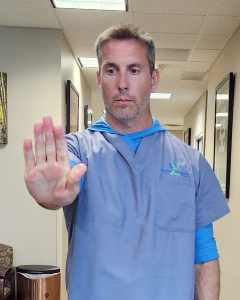
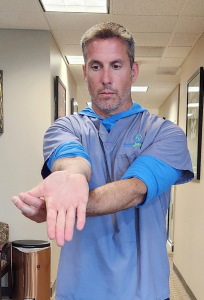
Other things you can do to help should you be experiencing carpal tunnel syndrome are to take short, frequent breaks throughout the day, avoid activities that aggravate it, pay attention to your form, and keep your hands warm to help with circulation. If you notice discomfort while using the computer, it’s often due more to using the computer mouse than the keyboard. Try to change your mouse or use it sparingly. Lastly, make sure to see your doctor as soon as possible to get an accurate diagnosis and to choose the appropriate form of treatment based on your symptoms and the severity of them. Early detection is vital to seeing a positive response to these stretches. If things get worse, then getting referred to a specialist like Dr. Ahuja is the next step to finding out all of your options.

